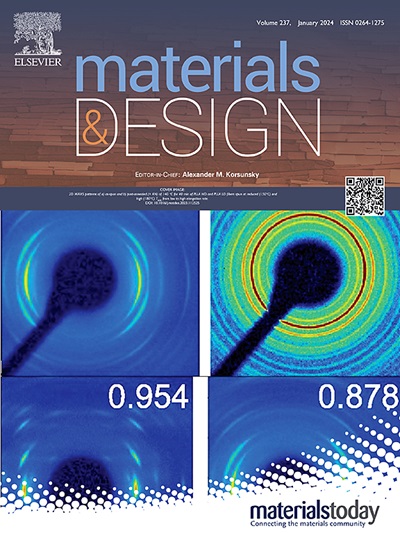Facile and straightforward fabrication of antimicrobial Cu-Ce oxide nanoagent for repair of acutely infected wounds
IF 7.6
2区 材料科学
Q1 MATERIALS SCIENCE, MULTIDISCIPLINARY
引用次数: 0
Abstract
The infection of multidrug-resistant bacteria makes chronic wounds difficult to heal, so there is a great need for new treatment strategies that can eradicate bacteria and promote wound healing. The antibacterial strategy based on reactive oxygen species (ROS) has opened new avenues to overcome the enormous challenges of antibiotic research, such as the lack of broad-spectrum antibiotics and the emergence of super resistant bacteria. In this study, we have successfully prepared a Cu-Ce co-doped nanometal oxide antimicrobial nanoagent using a straightforward and efficient hydrothermal strategy. It facilitates the healing of wounds induced by bacterial infections. The antibacterial mechanism of Cu-Ce nanoparticles involves their firm attachment to the bacterial cell wall, leading to its rupture and the subsequent production of ROS. Furthermore, treatment with Cu-Ce nanoagent reduces bacterial counts in mouse skin, stimulates collagen deposition, and expedites the recovery of bacterially infected wounds. Our study presents a straightforward and effective approach for addressing wound infections and promoting healing.

求助全文
约1分钟内获得全文
求助全文
来源期刊

Materials & Design
Engineering-Mechanical Engineering
CiteScore
14.30
自引率
7.10%
发文量
1028
审稿时长
85 days
期刊介绍:
Materials and Design is a multi-disciplinary journal that publishes original research reports, review articles, and express communications. The journal focuses on studying the structure and properties of inorganic and organic materials, advancements in synthesis, processing, characterization, and testing, the design of materials and engineering systems, and their applications in technology. It aims to bring together various aspects of materials science, engineering, physics, and chemistry.
The journal explores themes ranging from materials to design and aims to reveal the connections between natural and artificial materials, as well as experiment and modeling. Manuscripts submitted to Materials and Design should contain elements of discovery and surprise, as they often contribute new insights into the architecture and function of matter.
 求助内容:
求助内容: 应助结果提醒方式:
应助结果提醒方式:


